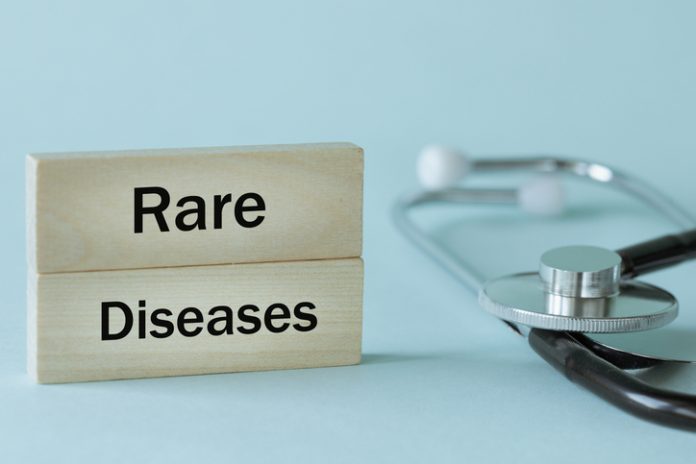The federal government is moving forward with controlling drug costs by approving “march-in” authority on drug pricing.
The Biden administration announced on December 7 that it would be directing government entities to employ the “march-in” clause under the Patent and Trademark Act Amendments, also called the Bayh-Dole Act, to curb the pricing of certain medications.
The announcement advises federal agencies to control the relicensing of high-priced drugs when “reasonable terms,” as defined by the administration, are not met.
“Putting aside for a moment the ambiguous metric ‘reasonable terms,’ this announcement to aggressively pursue ‘march-in’ policies, coupled with the uncertainty already generated by the Inflation Reduction Act (IRA), will further cripple the orphan disease drug pipeline by reducing investment into research and raising uncertainty about treatments,” said a spokesperson for the Rare Access Action Project (RAAP) in a December 12 press release. “As an organization whose focus is to advance access to therapies for rare disease patients…[we] simply cannot support the Biden Administration’s ‘march-in’ policy.”
Not So Rare
So-called orphan drugs are at the center of the issue. These drugs are defined as “products used to treat, prevent, or diagnose a disease that affects fewer than 200,000 people in the United States or that will not be profitable within seven years following approval by the U.S. Food and Drug Administration (FDA),” according to the Council for Affordable Health Coverage (CAHC).
Though they are termed “rare,” the diseases affect more than 30 million Americans, the CAHC states.
Rare diseases affect one in 10 people, more than the combined number of those with cancer or AIDS, according to Global Genes.
Incentives for Innovation
Historically, drug makers have been incentivized to pursue the development of medications and other treatments for rare diseases through the Orphan Drug Act. Since 1983, the law has provided a variety of benefits for drug makers and scientists working on orphan drugs, including tax credits for qualified human clinical trials, research grants, waived FDA review and approval fees, and up to seven years of market exclusivity.
According to the CAHC, the “law has worked as intended,” though the number of orphan drugs approved since then is still a “small drop in the ocean” of needed treatments and cures.
That’s why drug manufacturers often explore the use of one drug to treat multiple diseases, but the IRA’s policy would disincentivize potential repurposing of a drug by limiting benefits to only one marketed treatment.
“The final language included provisions…exempting the product from negotiations only for the first orphan indication,” Mike Eging, executive director of RAAP, told Health Care News. “Subsequent orphan therapeutic indications would be penalized and not permitted protections even though the new costs of research and development would be required.”
Course Reversal
With 95 percent of known rare diseases having no FDA-approved treatment, adding the threat of license revocation after years of R&D and clinical trials would completely undercut investor interest, the organization argued previously, during the debate on the IRA.
These and other policies will have a “chilling effect” on the development of oral options and alternatives for the treatment of rare diseases, further eroding the orphan drug pipeline and disincentivizing investors, according to Eging.
Sounds Like Socialism
“The Biden Administration has been on a mission to ‘lower drug prices’ for three years,” said Joel White, president of Health Innovation Alliance. “Instead of delivering lower costs to consumers, their plan is a recipe for fewer treatments, more disease, and worse health. The recently announced effort on ‘march-in-rights’ amounts to determining who produces products. If this sounds like socialism to you, you’re right.”
Around the world, this approach always results in fewer products for consumers, less development of new treatments, and worse access to care, says White.
“In the United Kingdom, citizens have access to fewer than half the cancer treatments available in the U.S.,” said White. “In the rare disease space, where incentives are already weak to explore new therapies, the impact will be even larger.”
CAHC found some U.S. companies have already halted potential secondary-use R&D in anticipation of the IRA’s full implementation. Alnylam Pharmaceuticals Inc. and Eli Lilly stopped work on rare disease treatments, citing the IRA’s provisions.
‘Need to Fight Back’
“This is the worst policy-led innovation environment for health care in U.S. history,” said White. “To protect consumers, we need to fight back against price controls and stop the reckless proposed ‘march-in’ policy.”
For now, the Centers for Medicare and Medicaid Services (CMS) should step in and protect benefits for secondary uses of orphan drugs, the CAHC stated in a blog post. Ultimately, Congress should amend the law to exempt these products from price controls, the organization states.
RAAP has explored a variety of out-of-pocket cost reductions for rare disease patients, including copay accumulator reform, pharmaceutical benefits manager transparency, and other areas.
“Lowering prescription drug costs is an important issue, but the solutions simply cannot come at the expense of rare disease patients,” said Eging.
House Support For Reform
“It is possible that there will be bipartisan support for a solution to protect subsequent orphan indications,” Eging said.
For example, Eging cited the ORPHAN Cures Act, which has bipartisan support in the U.S. House of Representatives. The bill would change the incentive structure within the IRA and encourage investment into ‘follow-on’ or supplemental indications for orphan drug development.
Ashley Bateman (bateman.ae@googlemail.com) writes from Virginia.





















